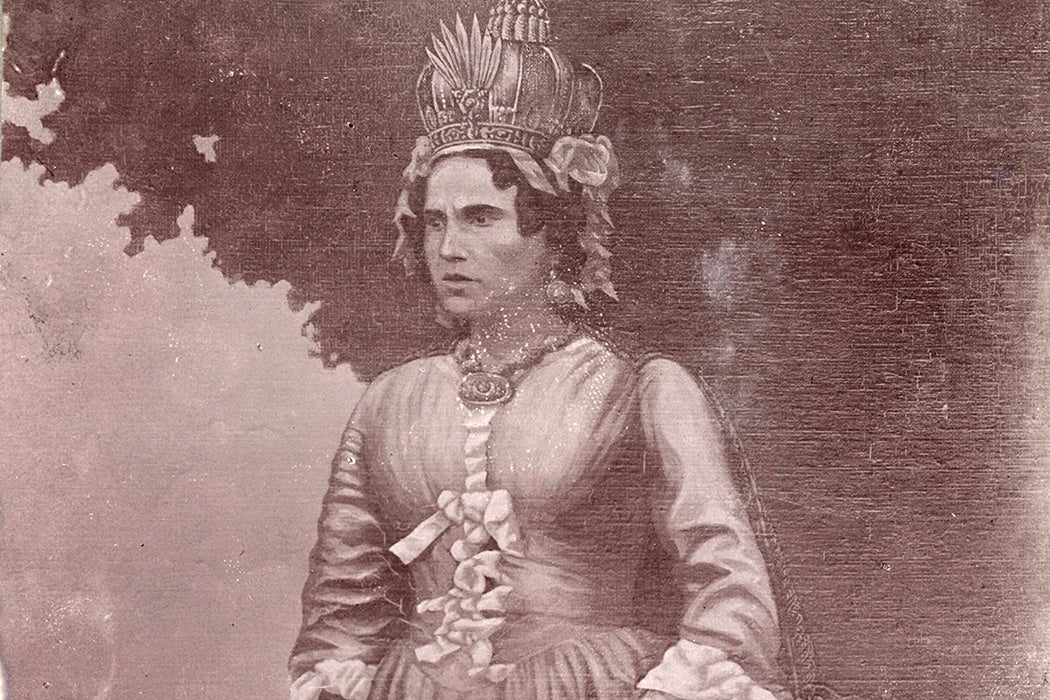Queen Victoria took the British throne in 1837, becoming the nation’s first female ruling monarch in more than a century. She began her reign at a time when her country was increasingly defining women’s role as a private one, outside the public sphere. Historian Arianne Chernock writes that one rhetorical tool British authorities used to make sense of this potential contradiction was comparing Victoria to another female monarch of her time, Queen Ranavalona of Madagascar.
In 1817, Chernock writes, Ranavalona’s husband and predecessor, King Radama, signed a treaty of friendship with Britain. But after he died and Ranavalona took power in 1828, she set a new course for Madagascar. She banned Christianity and ejected missionaries from the London Missionary Society, expelled the British resident agent, and reinstated traditional systems of divination and trial by ordeal.
When Malagasy ambassadors arrived in Britain to discuss this new state of affairs in 1837—just months before Victoria would take the throne—commentators seized on stories of Ranavolona’s brutality toward her own people. The British Foreign Office contrasted Ranavalona’s “practices abhorrent to humanity” with Victoria’s emerging image as a benevolent benefactress of colonized peoples.
Eight years later, this rhetoric heated up again. In 1845, Chernock writes, Britain and France attacked a Malagasy port town in retaliation for Madagascar’s unwillingness to trade with Europeans. Malagasy forces repelled them and ultimately mounted the skulls of twenty European troops on poles. Following the incident, Ranavalona wrote to William Kelly, the British captain who had helped lead the attack. As Kelly relayed the message to a newspaper, the letter asked “how Queen Victoria and Louis Philippe would take it if she were to meddle with their countries” and asserted that Ranavalona had “as much right to nail here enemy’s head to the end of a pole as the Queen Victoria to send her prisoners to exile.”
Chernock writes that Victoria’s contested position as a female monarch at this time was clear from an incident in 1845 when she and her husband participated in a German hunting expedition in which deer were corralled into an enclosed space to be shot. The diarist Charles Greville described her as “hard-hearted, selfish, and self-willed.”
For Victoria’s supporters, Ranavolona’s bold insistence on her right to deploy violence provided the perfect foil for fighting these sorts of attacks. For example, missionary and anthropologist William Ellis made a point of emphasizing that, in contrast to Madagascar’s queen, Victoria’s power lay not in legislating or ruling over her subjects but in connecting with the people emotionally and presenting an example of “all that [is] excellent and good in the relationships of life.”
In fact, British writers widely portrayed Ranavolona’s supposedly savage practices not just as reflections of her race or religion but also as the result of allowing a woman to take real, rather than largely ceremonial, power.
“Victorians magnified and often distorted Ranavalona’s transgressions in order to delineate an increasingly circumscribed, feminine, domestic, Christian, and imperial role for their own queen,” Chernock writes.
Teaching Tips:
Explore the Schomburg Center for Research in Black Culture (New York Public Library) collection. Available via JSTOR, the collection includes works that document African history from the 1800s to the twentieth century, including images from History of Madagascar: embracing the progress of the Christian mission and an account of the persecution of the native Christians (1839).
Support JSTOR Daily! Join our membership program on Patreon today.







